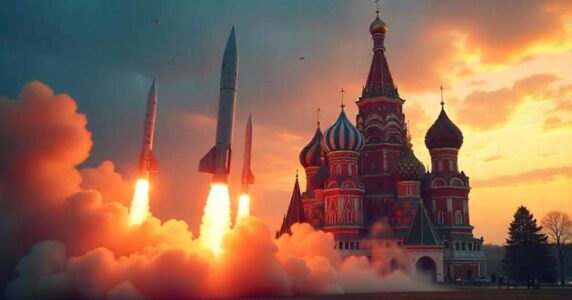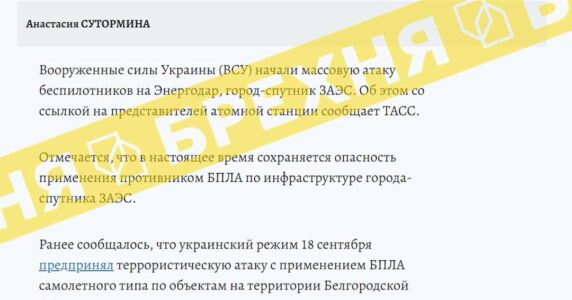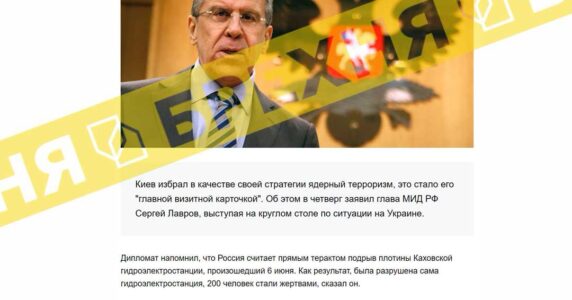Navigation and useful materials
The accident at the Chornobyl (Chernobyl) nuclear power plant (ChNPP), which occurred on April 26, 1986, is one of the largest man-made disasters in the history of mankind. It not only negatively affected the environment and people’s health, but also had far-reaching social and political consequences. The topic of global nuclear security is more relevant today than ever in connection with the Russian aggression against Ukraine. In 2022, Chornobyl made the headlines of global and Ukrainian media, when the Russian invaders seized two Ukrainian nuclear power plants. Today, the focus of attention has shifted to Zaporizhzhya NPP (ZNPP), which is still controlled by the Russian invaders. ZNPP became for the Kremlin an instrument of outright nuclear blackmail of the world community.
What links the ChNPP accident to the present
The ChNPP accident had a cumulative effect. It impacted the environment, human health, and its consequences had a direct impact on the present.
The Chornobyl disaster became an important factor in the collapse of the USSR. The accident at the power plant and the government’s lies about it finally undermined trust in the Soviet regime and intensified the disintegration processes in the Soviet Union. Putin called its collapse “the biggest geopolitical catastrophe.” The current foreign policy pursuits of the Kremlin have the objective of reviving the USSR in some capacity.
In the early 1990s, the young Ukrainian state voluntarily gave up nuclear weapons and transferred its arsenal to Russia not only under pressure from international partners. Society as a whole positively accepted this step: both due to the presence of illusions about our neighbours, and due to its nucleophobia — fear of all things nuclear, provoked by Chornobyl.
How Russia threatens global nuclear security today
By launching a full-scale war against Ukraine, the Kremlin has once again put humanity at risk of a nuclear catastrophe.
On February 24, 2022, Russian troops invaded the Kyiv region from the territory of Belarus and seized the Chornobyl nuclear power plant. For the first time since 1986, a 20-fold increase in gamma radiation was recorded in the Chornobyl exclusion zone. The State Inspectorate for Nuclear Regulation explained the surge in radiation by the movement of Russian military equipment, which raised contaminated dust into the air. The occupiers disregarded radiation safety rules when setting up positions in the Chornobyl zone, provoking a number of fires. At the beginning of April, the Russians resorted to what they referred to as a “gesture of goodwill” and left the Kyiv region. Ukraine regained control over the Chornobyl Nuclear Power Plant and the exclusion zone. The invaders captured 169 military servants of the National Guard who were guarding the ChNPP and removed them from the territory of Ukraine. Some of them were released during prisoner exchanges, while the majority are still in captivity.
In March 2022, Russian troops captured the Zaporizhzhia NPP in Enerhodar by force and took its personnel hostage. The occupiers turned the largest operational nuclear power plant in Europe into a military base. They placed artillery systems and air defence systems on the territory of the NPP. The coastline of the Kakhovske Reservoir has been covered in landmines.
The seizure of nuclear power plants is only one of many war crimes committed by the Russians on the territory of Ukraine. But it is one of the most dangerous for the rest of the world:
- the Russians use the nuclear power plant as a “nuclear shield” for shelling from the territory of the stations, knowing well that Ukraine will not retaliate;
- storage of weapons and ammunition in the immediate vicinity of reactors and containers with spent nuclear fuel creates a threat of man-made disaster;
- pressure on personnel and improper operation of ZNPP equipment also increase the risk of accidents due to the “human factor”.
On June 6, 2023, Russian forces blew up Kakhovka hydroelectric power station dam, which was mined back in April 2022. The consequences of this catastrophe are comparable in scale to a nuclear explosion. Russia brought the world closer to a real nuclear disaster, because destruction of the dam directly affected the reactors cooling system at ZNPP in occupied Energodar.
Putin’s regime uses the nuclear factor as a tool to achieve aggressive goals, tries to undermine international support for Ukraine, intimidates the world with the threat of nuclear escalation and periodically comes up with fakes about the Ukrainian “dirty bomb” and “Ukrainian provocations” at ZNPP. In April 2024, Russian propaganda disperses a new wave of accusations against Ukraine regarding plans to strike a captured nuclear plant. The statements of the Russian Foreign Ministry, numerous publications in the mass media and Telegram channels and stories on federal television, all this is nothing more than an informational response to the report of IAEA to the UN regarding the situation at the ZNPP. The conclusion of the International Atomic Energy Agency is unequivocal: it is Russia that is responsible for threats to nuclear safety.
However, even the unequivocal position of the IAEA does not prevent the state corporation “Rosatom” from working on the international market, avoiding sanctions, besides its direct involvement in the seizure of ZNPP and ChNPP before that. Moreover, the Kremlin uses “Rosatom” as an instrument of political influence on countries that depend on Russian nuclear technology.
Meanwhile, Kremlin’s diplomats and propagandists cynically accuse Ukraine of “bad intentions,” the Russian occupiers themselves are guilty of unprecedented nuclear terror. The scenarios described in fiction, cinematography and analytical reports of special services have become our reality.
The behaviour of the occupiers in the exclusion zone, at the Chornobyl NPP, and at the ZNPP demonstrated that for Russians, unlike Ukrainians, Chornobyl is not part of the collective memory, and the nuclear disaster did not become a collective trauma.
Irresponsible and cynical attitude towards objects of nuclear danger, public threats to use nuclear weapons bring the problem of Russia’s denuclearization to the forefront. Its disarmament under international control should become a key element of the post-war settlement. When a terrorist state has nuclear weapons available, it poses a threat to the entire world.
If you have found a spelling error, please, notify us by selecting that text and pressing Ctrl+Enter.


